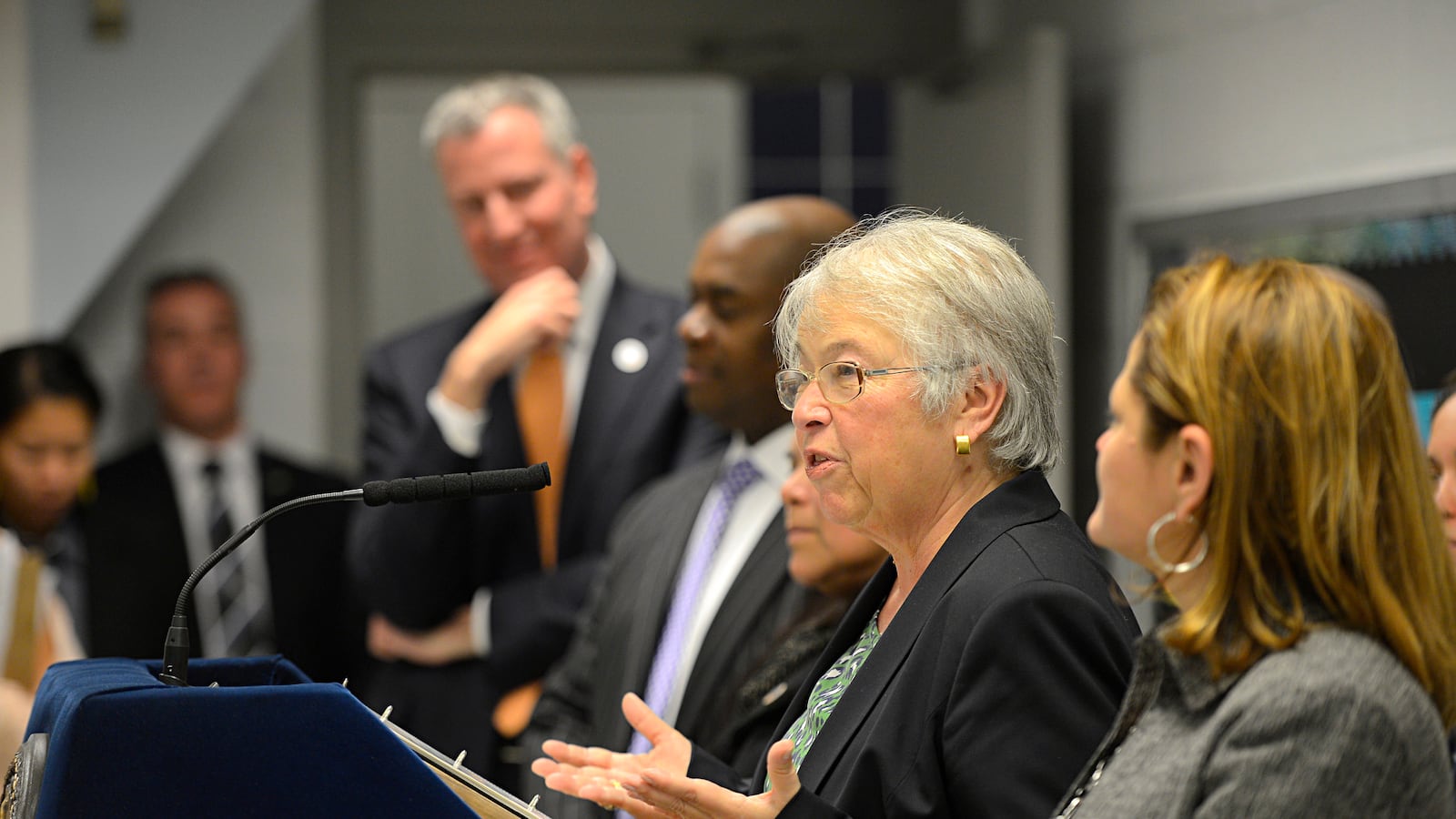After the first full school year of leadership for Chancellor Carmen Fariña, New York City teachers are happier with the city’s education leadership, according to survey data released Monday by the Department of Education.
Sixty percent of teachers said they were satisfied with the chancellor, up from 31 percent on 2014, while dissatisfaction dropped from 43 to 18 percent. The Panel for Educational Policy, which approves rule changes and decisions about school co-locations, also saw its popularity rise, with its approval rating jumping from 28 percent to 49 percent. (This year’s surveys allowed for the new middle-ground responses of “somewhat” satisfied and dissatisfied.)
The results also follow an eventful year for Fariña and Mayor Bill de Blasio, who kicked off a pre-kindergarten expansion and a new effort to improve the city’s lowest-performing schools. The Panel for Educational Policy, which has a majority of members appointed by the mayor, displayed some independence, with members speaking out against co-location proposals they disagreed with and occasionally delaying or voting down plans.
This year’s surveys were revamped to match the city’s “Framework for Great Schools,” a list of qualities it considers essential for successful schools, such as effective leaders, teachers who work together, and strong ties with parents and community members. The city has updated its school evaluations to measure the same qualities as part of a larger effort to create more consistency across the vast school system.
Some takeaways from the surveys:
Parents are broadly satisfied, as they have been in recent years. Ninety-five percent of parents said they are happy with their child’s education — a number that has held steady for five years.
Students feel safer. Ninety-two percent of students said they felt safe in class, up from 87 percent last year.
Participation was down. Just over 950,000 students, parents, and teachers took this year’s survey, down from more than 980,000 in 2014. Participation dropped most among parents, half of which filled out the survey — down from 53 percent last year, but about even with 2010 participation rates.
The questions allowed for comparisons using new, broader metrics like “trust.” Nine district schools earned a 100 percent on that factor: Sixth Avenue Elementary School, P.S. 527 East Side School for Social Action, Fort Hill Collaborative Elementary School, P.S. 159 Luis Muñoz Marin Biling, Sunset Park Avenues Elementary School, Brighter Choice Community School, Ronald Edmonds Learning Center II, Bronx Delta School, and the Young Adult Borough Center at the South Shore campus.
Four schools had overall trust scores at or below 65 percent: P.S. 28 Mount Hope in the Bronx; Queens Gateway to Health Sciences Secondary School; the long-struggling Banana Kelly High School; and P.S. 106 in Queens, which the New York Post dubbed the “School of No.”
The surveys present a mixed picture at two long-struggling high schools. No parents of students at Automotive High School, one of the two struggling schools that the city has intervened at most aggressively this year, filled out the survey. It was the only traditional district school without any parent participation.
Automotive also saw low numbers for teachers’ satisfaction with the principal, Caterina Lafergola. Only 54 percent of teachers agreed that the principal is an effective manager, and 52 percent agreed that the principal had confidence in teachers’ expertise. That lack of confidence may explain the high teacher turnover at that school, where teachers had to reapply for their jobs in the spring if they wanted to remain at Automotive. Many chose not to, and a few who did were not re-hired.
At Boys and Girls, another long-struggling school where the city installed a new principal, Michael Wiltshire, at the start of the year, 79 percent of teachers characterized the principal as effective.
Professional development is getting more useful. Eighty-four percent of teachers said their trainings have been “sustained” and “coherent” this year, a number that has been inching up since 2012. This school year was the first after changes to the teachers-union contract provided for 80 minutes every week for professional development.
Click here to view the question-by-question responses or here for the city’s more selective presentation of results. You can find results by school by searching here.


